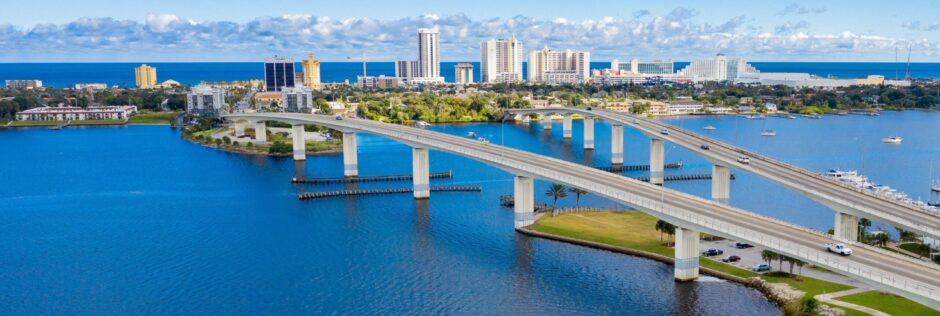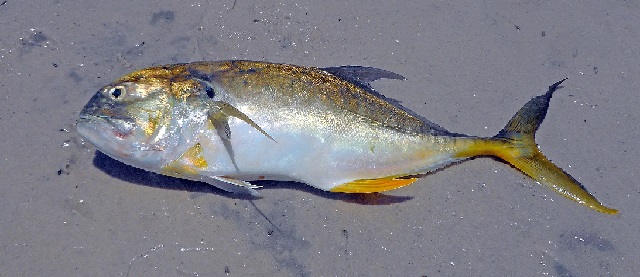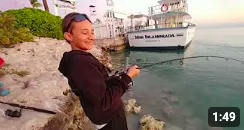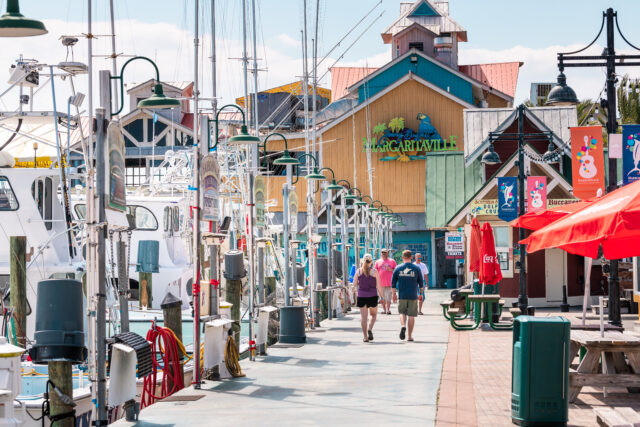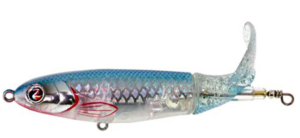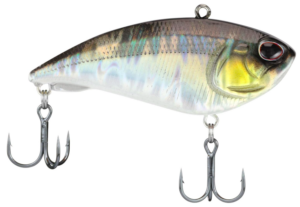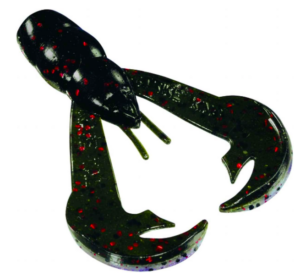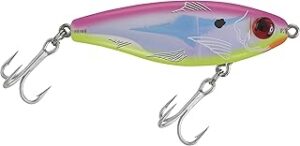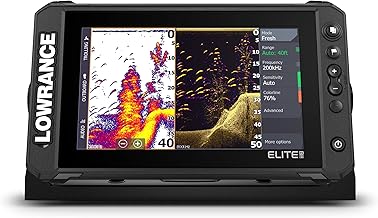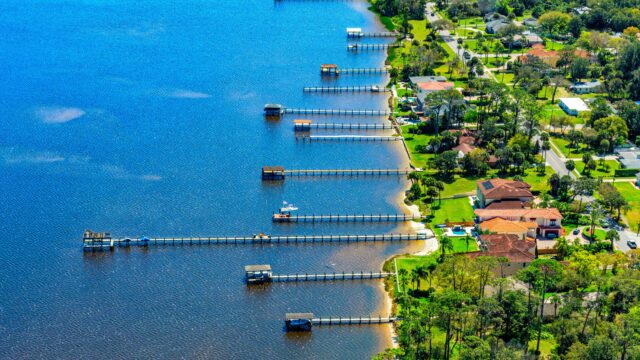
The Daytona Beach area is home to a large amount of inshore waters to fish from Ormond Beach down to Ponce Inlet. Anglers target redfish, snook, sea trout, flounder and more in the area waters.
Halifax River
The Halifax River flows right through Daytona Beach and this is where most of the inshore charters will be fishing with their clients on any given day. It is a coastal river that has brackish waters and it is home to a variety of fish such as snook, redfish, sea trout, flounder and more. Anglers have lots of areas to fish in the river such as mangroves, docks, flats, channels, bridges, islands and more.
[mappress mapid=”7″]
Ponce Inlet
Ponce Inlet is a large inlet and a very popular place for anglers to fish. For many anglers that are looking to go further offshore, the jetty is a nice backup plan if the waves are too rough out on the Atlantic Ocean. This inlet provides very good fishing opportunities around the jetty and further inshore as well. Anglers catch redfish, sea trout, snook, sheepshead, flounder, bluefish and many other species of fish.
[mappress mapid=”8″]
Indian River North
The Indian River North is also a productive inshore water to fish near the Ponce Inlet and New Smyrna Beach. You may be driving 30 minutes or so from Daytona Beach to get down to this part of the inshore fishery, but many anglers do report good catches in these waters. Anglers fish for redfish, trout, snook, flounder and more in the shallower waters of the Indian River.
[mappress mapid=”9″]
Popular Fish Caught Inshore
Below you can find some of the most popular fish that you can catch in the inshore waters of Amelia Island. There are also pictures and some fishing tips to help you catch more fish on your next visit here.
Black Drum
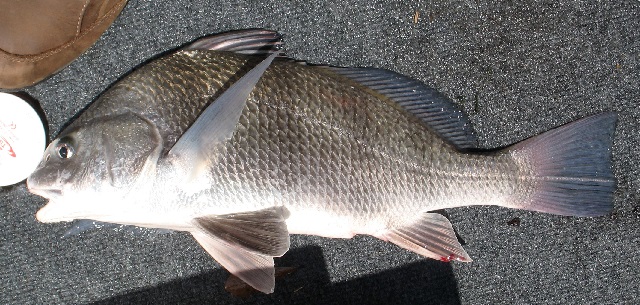
Black drum move into the inshore areas near the Ponce Inlet in large numbers every spring. The river mouths and inlets usually provide good numbers of very large drum in the spring and then eventually, you can find good numbers of them back into the inshore waters throughout the area. While early summer still provides some good fishing for them, the summer fishing usually slows down quite a bit, but then the fall fishing can be very good again.
Black Drum Fishing Tips
Spring and fall are popular times to target black drum because they head into the bays and inlets to spawn. They feed on the bottom and some of the best baits are clams and crabs.
Visit our Black Drum fishing page to learn more.
Flounder
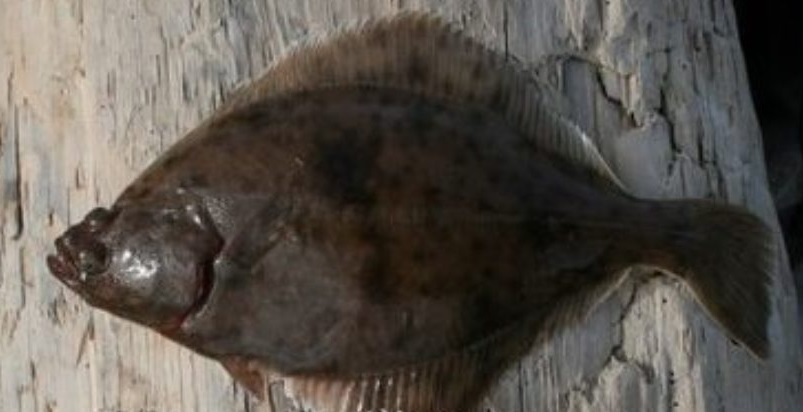
Flounder are available year round in the waters around the Ponce Inlet. For many anglers, they will catch flounder while targeting other species of fish inshore, however, they can be fun to catch and they taste excellent, so they are definitely worth targeting. The inshore waters in the Daytona Beach area offer a little bit of everything. There are inlets, rivers, creeks, plenty of river mouths, docks, grass flats and more so you have plenty of places to fish for flounder.
Flounder Fishing Tips
Flounder can be caught with artificial lures, however, for many anglers, live bait or natural baits are considered the norm when fishing for flounder. Flounder love hanging tight to the bottom, so pick out your favorite bottom rig and pair it with a bull minnow, finger mullet, pinfish or shrimp and you should catch some fish.
Visit our Flounder fishing page to learn more.
Jack Crevalle
Jack Crevalle are common in the inshore waters around Daytona Beach. The warm weather months will push more fish into this area. They can be super exciting to catch when you find a school of them. Anglers target them with a variety of lures and baits, but topwater lures can be a lot of fun when they are schooling up around baitfish and feeding near the surface.
Jack Crevalle Fishing Tips
Jack Crevalle are a very popular species for inshore anglers, although, they are commonly found offshore as well. These fish are extremely powerful and capable of making long runs, especially if you are using light tackle. Their average size ranges from 2 to 5 pounds, but in most areas fish up to 10 pounds are plentiful. Some people eat these fish, but most people would rate them as very poor-tasting.
Learn More About Jack Crevalle
Ladyfish can be a fun fish to catch, especially for younger anglers. They do not get very big, so the more experienced anglers usually see them as bait for bigger fish. Ladyfish are an excellent bait for a variety of bigger fish. They work great alive and as cut bait. There will be plenty of ladyfish in the inshore waters in the river here.
Ladyfish Fishing Tips
Ladyfish are cousins of the much larger tarpon. They have a long, slender body and are fairly small, averaging 2 to 3 pounds. They are fun to catch for young anglers, but for most adult anglers, ladyfish are used for bait. Ladyfish can easily be caught with a small hook, weight and live shrimp, small bait fish or cut bait.
Visit our Ladyfish fishing page to learn more.
Redfish

Redfish are found year round in the inshore waters around the Ponce Inlet. This area has plenty of inshore waters to fish whether you want to fish the Ponce Inlet, the river, or specific spots such as river mouths, bridges, grass flats, docks and more. Spring and fall are typically the best months to target redfish and in the fall, big bull redfish move back into shore which gives anglers a shot at a trophy-sized fish.
Redfish Fishing Tips
Anglers target redfish with a variety of artificial lures, live baits and natural baits. While you have so many options for targeting redfish, most anglers will keep it simple and use live shrimp, dead shrimp or lures that mimic a shrimp. You can target the smaller reds with medium heavy rods and reels, but if you are going after bigger redfish, you’re going to want to go with medium heavy to heavy action gear to help land some of these huge fish.
Visit our Redfish fishing page to learn more.
Saltwater Catfish
You will find plenty of catfish in the inshore areas. You will find catfish around the bridges, inlet, river mouths, docks, along the surf and many other places in the vast amount of inshore water here. They can be annoying if you don’t want to catch them or exciting to provide some action while other fish aren’t biting.
Hardhead Catfish
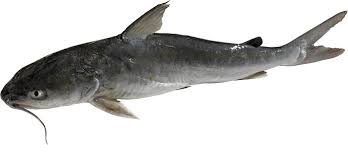
Gafftopsail Catfish
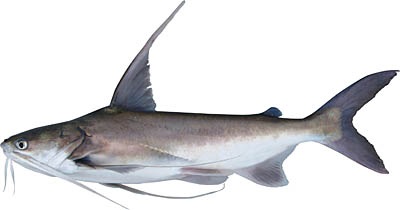
Catfish Fishing Tips
Catching catfish is easy in saltwater. Once you find them, they will easily bite many different types of cut baits. Just get your bait on the bottom, wait for the bite and then set the hook.
Sea Trout
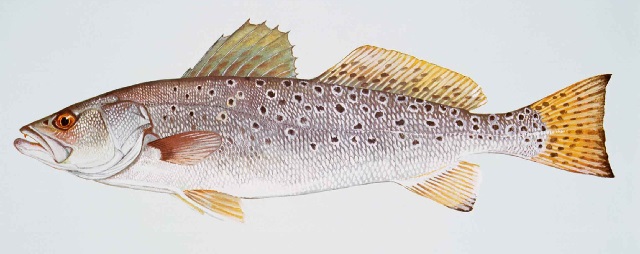
The inshore waters are home to some good fishing for sea trout and these fish are available year round. Fish the grass flats in the backcountry waters and you should find some trout. Other good places to try are in the Ponce Inlet, around river and creek mouths, docks and bridges throughout the inshore waters here. They are a reliable fish to catch here even during the colder months of the year.
Sea Trout Fishing Tips
Sea trout give anglers lots of options because they can be very aggressive. At times, you can do just as well or even better with artificial lures. For the live bait anglers, you have a variety of live and natural baits that you can use to catch sea trout. Anglers can also get away with using lighter tackle as well since most of the better spots tend to be around shallow water grass flats.
Visit our Sea Trout fishing page to learn more.
Sharks
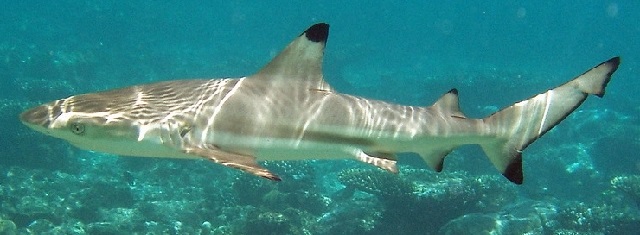
There are plenty of sharks in this area, especially during the summer with the warmer water temperatures. Anglers will catch sharks on the beaches and farther inshore too, but if you are coming here to target sharks, the better fishing will be nearshore and offshore out around the reefs and wrecks.
Learn More About Sharks on our Shark Fishing page.
Sheepshead
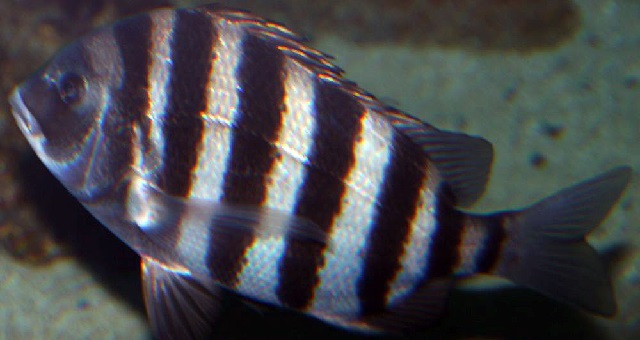
Northeast Florida is home to some very good sheepshead fishing, especially during the winter months. Sheepshead do well in cooler water and they will feed pretty consistently in the inshore waters around the Ponce Inlet. You have plenty of places to fish for them here with the inlet, rivers, docks, the jetty and more. On some of the colder days in the winter, sheepshead will be the fish that helps make fishing exciting since they are usually willing to bite.
Sheepshead Fishing Tips
Sheepshead are one of the tougher saltwater fish to catch on artificial lures. It can be done, but using live or natural baits can out fish lures by 10 to 1 or more at times. It is easy to understand why most anglers just go with live bait and they don’t even mess with lures when fishing for sheepshead. Shrimp and fiddler crabs are the most popular baits, but don’t rule out a variety of cut baits, oysters and sand fleas. Sheepshead are known for stealing your bait and they also are a tough fish, so make sure you have a strong enough hook and a solid medium-heavy to heavy action fishing rod or you will lose a lot of fish.
Visit our Sheepshead fishing page to learn more.
Mangrove Snapper
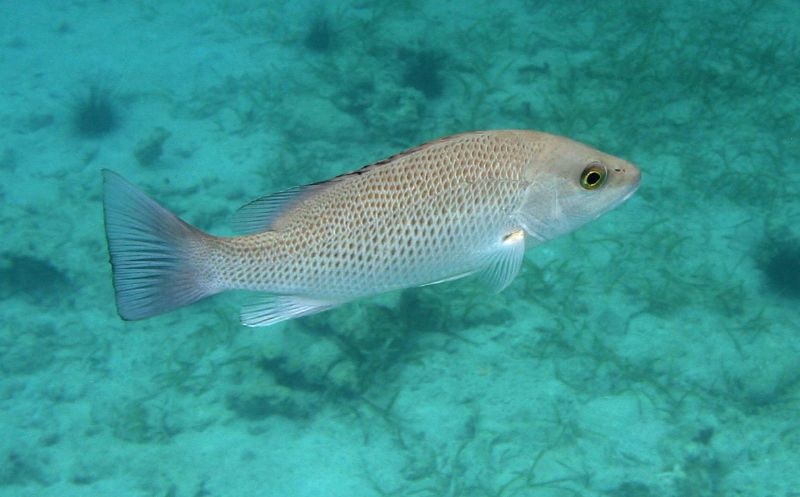
Mangrove Snapper are a popular to fish to target in the inshore waters of Daytona Beach.
Mangrove Snapper Fishing Tips
Mangrove Snapper are one of the most popular snapper to catch because large populations of juvenile fish can be caught inshore where most anglers fish. Offshore, you will find bigger mangrove snapper over the reefs and wrecks. Some of the best baits to use for mangrove snappers are live and dead shrimp, mud minnows, small pinfish, small finger mullet and small crabs.
Snook
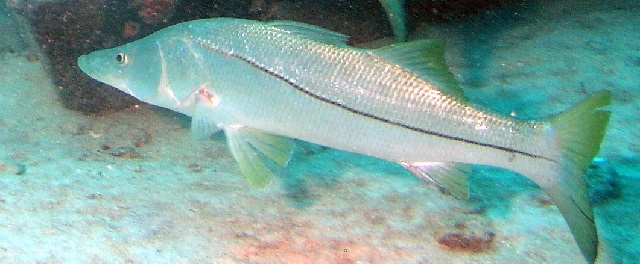
Snook like warm water and they can really struggle in the cool waters that winter brings to the Daytona Beach area. However, from spring through fall, water temperatures are much better for snook and anglers will fish for them in the inlet, around the jetty and inshore near river mouths, mangroves and around docks. You aren’t going to find the snook numbers that you will see in south Florida, however, there will definitely be a fishable population around from spring through fall.
Snook Fishing Tips
Most anglers prefer to use lures for snook, but live baits such as jumbo shrimp and pilchards are some of the best baits to use. At times, snook can be super tough to catch on lures, but a lively shrimp or pilchard will usually still get plenty of bites even when they are picky. If you fish for bass in freshwater, the type of tackle will be similar to largemouth bass fishing except you may have to upsize the rod, reel and line a bit.
Visit our Snook fishing page to learn more.
Tarpon
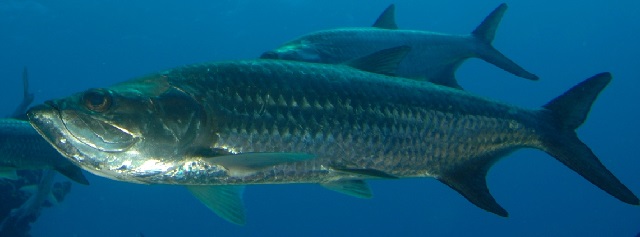
While you may be able to catch some tarpon year round, the migratory tarpon will be providing the best fishing opportunities in this area. With cooler water temperatures in this part of the state, it takes a little longer into the spring for the tarpon to make their way into the Daytona Beach area in larger numbers. Tarpon will eventually arrive near the end of spring and there are usually plenty of them in this area through the fall. Ponce Inlet is one of the most popular spots to catch bigger tarpon.
You will also find schools of tarpon running just off the beaches and some fish will push back into the inshore waters of the Halifax River. Fishing for the resident tarpon will also pick up from late spring and carry through the fall. In the summer, the migratory tarpon do keep working their way north, so you will eventually see smaller numbers here as the summer drags on, but then the fall mullet run brings large numbers of tarpon back down south. The mullet run is one of the best times to target big tarpon in this area as they can be found attacking schools of mullet in the hundreds if not thousands at times.
Tarpon Fishing Tips
While many anglers may run into smaller tarpon and catch them without much effort, to consistently target bigger tarpon, you need to make sure you have the right tackle & equipment so things go your way. Tarpon will eat a variety of baits, so you have a lot of options when it comes to live & cut baits or artificial lures. The time of year is very important as well since tarpon will migrate a long way up and down both the Gulf & Atlantic Coasts each year.
Visit our Tarpon fishing page to learn more.
Fish with Kevin on Headwaters Lake
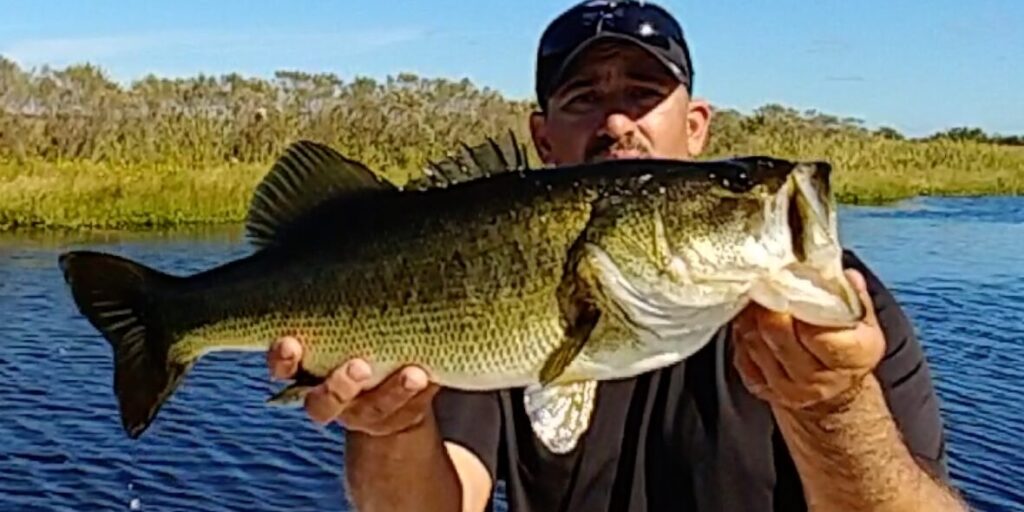
Come fish Florida’s newest and best bass fishing lake. It is located only about an hour and 20 minutes from Orlando Airport. Kevin is the owner of UltimateFishingSite.net and he is now offering guided bass fishing trips on Headwaters Lake from December 2024 through June 11th, 2025. You will be fishing out of his brand new 2024 Mako Fishing Boat.
Kevin’s Guide Page – Fish with Kevin
